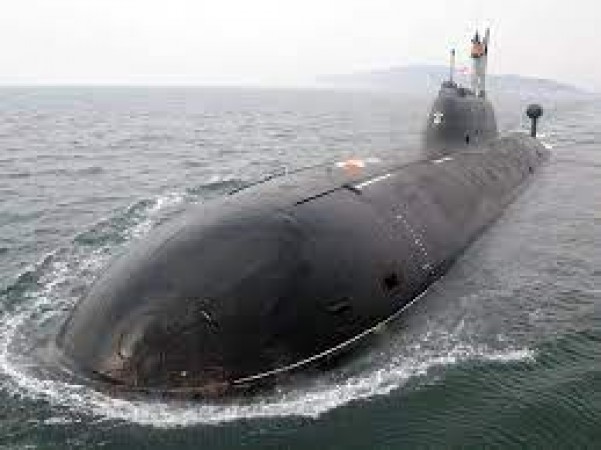
The history of submarines spans thousands of years, with mankind's fascination with underwater exploration dating back to ancient times. From primitive diving bells to the technologically advanced vessels of today, submarines have undergone a remarkable evolution. In this article, we will delve into the fascinating journey of submarines, tracing their development from their humble beginnings to the cutting-edge marvels that navigate the depths of the ocean.
Ancient Origins and Early Innovations: The concept of exploring beneath the water's surface has captivated the human imagination for centuries. The earliest recorded attempts at underwater travel can be traced back to ancient Greece and Rome, where simple diving bells were employed to enable limited exploration. These devices allowed divers to descend and remain submerged for short periods, providing a glimpse into the hidden world beneath the waves.
Submarine Design and Inventors: Over the centuries, numerous inventors and engineers have dedicated their lives to unlocking the potential of underwater navigation. Notable pioneers such as Leonardo da Vinci, Cornelis Drebbel, and John Holland contributed groundbreaking designs and concepts that laid the foundation for future submarine development. Da Vinci's sketches and plans for a submersible vessel, although never constructed during his lifetime, demonstrated remarkable foresight and innovation.
The Birth of the Modern Submarine: The true birth of the modern submarine can be attributed to the Industrial Revolution. The advancements in engineering, metallurgy, and propulsion during the 19th century paved the way for significant breakthroughs. The introduction of steam power and the emergence of electric propulsion systems marked pivotal moments in submarine history.
World War I and Submarine Warfare: The outbreak of World War I catapulted submarine technology into the realm of warfare. Both the Allied and Central Powers recognized the strategic advantage submarines could provide, leading to intense competition and innovation in submarine design. The German U-boats, in particular, wreaked havoc on maritime trade, employing new tactics such as unrestricted submarine warfare.
Submarine Development and Technological Advancements: Following World War I, submarines continued to evolve with significant advancements in propulsion, hull design, and navigation systems. The introduction of nuclear power in the 1950s revolutionized submarines, enabling extended range and greater stealth capabilities. These advancements culminated in the development of ballistic missile submarines (SSBNs) and fast attack submarines (SSNs), capable of carrying out a wide range of military operations.
Modern Submarines and Future Prospects: Today, modern submarines represent some of the most advanced and sophisticated vessels on the planet. They serve a variety of roles, including strategic deterrence, intelligence gathering, and special operations. Countries worldwide continue to invest in submarine technology, striving for improved stealth, enhanced firepower, and longer operational endurance.
Submarines perform a wide range of functions and tasks, serving various purposes depending on their design and the mission they are assigned to. Here are some of the primary roles and functions performed by submarines:
Military Operations: Submarines are extensively used for military purposes by naval forces around the world. They can operate stealthily underwater, making them effective for intelligence gathering, surveillance, and reconnaissance missions. Submarines also play a critical role in naval warfare, capable of launching missiles and torpedoes and conducting covert operations.
Strategic Deterrence: Nuclear-powered ballistic missile submarines (SSBNs) are designed to carry and launch long-range ballistic missiles armed with nuclear warheads. These submarines provide a powerful deterrent capability, ensuring the security and defense of a nation by maintaining a constant underwater presence and the ability to launch retaliatory strikes if necessary.
Anti-Submarine Warfare: Submarines are utilized in anti-submarine warfare (ASW) operations to detect, track, and engage enemy submarines. They employ advanced sonar systems, torpedoes, and other sophisticated equipment to locate and neutralize hostile submarines.
Special Operations: Submarines can facilitate special operations by deploying Special Forces personnel and equipment covertly in enemy territory. They provide a clandestine means of inserting and extracting personnel, conducting reconnaissance, and carrying out other specialized missions.
Research and Exploration: Submarines play a crucial role in scientific research and exploration of the underwater environment. They allow scientists and researchers to study marine life, geological formations, hydrothermal vents, and other phenomena in great detail. Submersibles are also used for deep-sea exploration, enabling humans to reach extreme depths that are otherwise inaccessible.
Rescue and Salvage Operations: Submarines equipped with specialized rescue chambers or Deep Submergence Rescue Vehicles (DSRVs) can be deployed in emergencies to rescue crew members from distressed submarines or other underwater incidents. They can also assist in salvage operations, recovering sunken vessels or valuable assets from the seabed.
Underwater Infrastructure Maintenance: Submarines are involved in the inspection, repair, and maintenance of underwater infrastructure such as oil rigs, pipelines, and telecommunication cables. They provide a cost-effective and efficient means to access and operate in these underwater environments.
Conclusion: The history of submarines is a testament to humanity's ingenuity and desire to explore the unknown. From ancient diving bells to the nuclear-powered behemoths of today, submarines have come a long way. As we look to the future, advancements in technology will likely further transform submarine capabilities, enabling us to delve even deeper into the mysteries of the ocean and unlock new possibilities for underwater exploration and defense.
Girish Sharma Reigns as Two-Time Champion of Asia's Best Wedding Anchor at Wow Awards Asia 2023